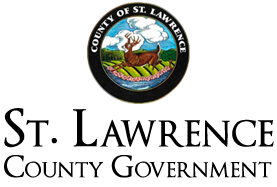The power to regulate the use of land in New York State is generally granted to local units of government. In St. Lawrence County 40 of the 47 municipalities have exercised those powers by adopting some type of land use management practices. These land use practices have concentrated on establishing use regulations and minimum development standards regarding density, building setback, off-street parking, signs and other aspects of construction. Enforcement of established regulations varies from community to community.
The most common form of land use control in the county is subdivision regulations which are enforced by 26 municipalities. Subdivision regulations include the review and division of land into parcels so that minimum development standards are met including:
roads drainage
lot layout orderly growth and development
Zoning regulations have been established to assist in separating incompatible uses, protecting natural resources, protecting home and business investments, and preventing overcrowding. Dividing land into separate land use districts and developing community plans are done in accordance with these established zoning regulations.
State agencies do exert some land use controls over lands in a number of municipalities. In the southeastern portion of the county the Adirondack Park Agency develops and implements a park-wide land use plan. The enforcement of this land use plan protects the natural beauty and resources of the park.
The New York State Agricultural Districts Program has been active in St. Lawrence County since 1978. This government program was designed to benefit farmers throughout New York State by protecting farmland from potentially conflicting state projects, land zoning that is restrictive against farming, and harmful tax assessments. There are seven Agricultural Districts in St. Lawrence County. Each of these districts was approved by the St. Lawrence County Board of Legislators.
The St. Lawrence County Planning Board brings a county perspective to land use planning issues. The Planning Board has published a comprehensive land use plan with updates provided periodically. The County Planning Board reviews local projects which are located where they might affect county or state facilities or adjacent municipalities. The board uses a fast-track approach to projects without such impacts. Nearly 90% of all projects are sent back quickly “for local action.” Ultimate authority over most land use decisions rests with the local governmental units, with the exception of those towns within the Adirondack Park.
